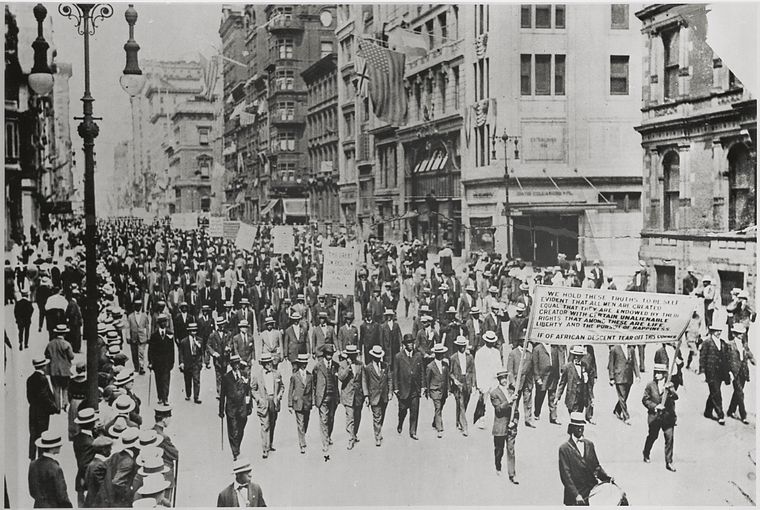The Silent Protest
While reading accounts of the march in Washington this weekend, I was reminded of an account of this demonstration in July 1917 as described by James Weldon Johnson in an editorial in The New York Age, August 3, 1917.
The protest was planned by the NAACP in response to a particularly vicious race riotin East St. Louis, Illinois, in which at least 100 black people were murdered, many of them lynched. The march was down Fifth Avenue, in the heart of Manhattan. It was led by children, followed by the women and then the men, all dressed in white. Here is how Johnson described it:
Last Saturday the silent protest parade came off, and it was a greater success than even the committee had dared to hope it would be. Some of the New York papers estimated the number of marchers in line as high as fifteen thousand. It was indeed a mighty host, an army with banners.
Imagine that. A mass demonstration designed to touch the soul of those who needed to be persuaded.No written word can convey to those who did not see it the solemn impressiveness of the whole affair. The effect could be plainly seen on the faces of the thousands of spectators that crowded along the line of march. There were no jeers, no jests, not even were there indulgent smiles; the faces of the on-lookers betrayed emotions from sympathetic interest to absolute pain. Many persons of the opposite race were seen to brush a tear from their eyes. It seemed that many of these people were having brought home to them for the first time the terrible truths about race prejudice and oppression.
The power of the parade consisted in its being not a mere argument in words, but a demonstration to the sight. Here were thousands of orderly, well-behaved, clean, sober, earnest people marching in a quiet dignified manner, declaring to New York and to the country that their brothers and sisters, people just like them, had been massacred by scores in East St. Louis for no other offense than seeking to earn an honest living. . . .
More than twelve thousand of us marcing along the greatest street in the world, marching solemnly to no other music than the beat of muffled drums, bearing aloft our banners on which were inscribed not only what we have suffered in this country, but what we have accomplished for this country, this was a sight as has never before been seen.
But, after all, the effect on the spectators was not wholly in what they saw, it was largely in the spirit that went out from the marchers and overpowered all who came within its radius. There was no holiday air about this parade. Every man, woman and child that took part seemed to feel what it meant to the race. Even the little six year old tots that led the line seemed to realize the full significance of what was being done. And so it was that these thousands and thousands moving quietly and steadily along created a feeling very close to religious awe.


